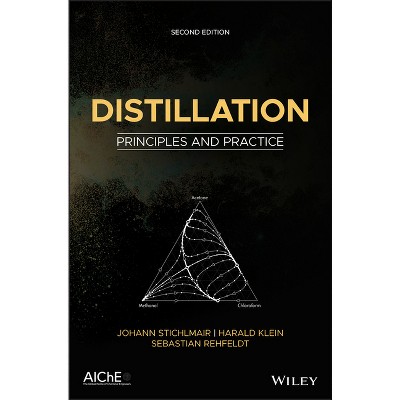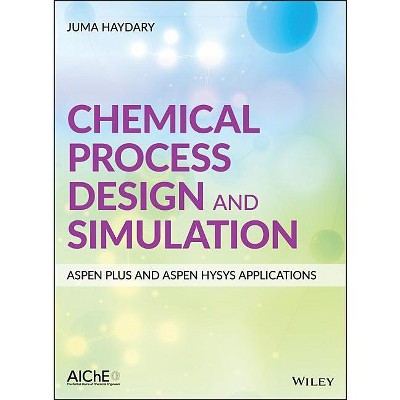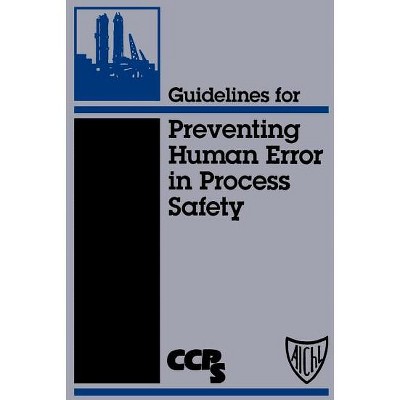Using Aspen Plus in Thermodynamics Instruction - by Stanley I Sandler (Paperback)

About this item
Highlights
- A step-by-step guide for students (and faculty) on the use of Aspen in teaching thermodynamics - Easily-accessible modern computational techniques opening up new vistas in teaching thermodynamicsA range of applications of Aspen Plus in the prediction and calculation of thermodynamic properties and phase behavior using the state-of-the art methods- Encourages students to develop engineering insight by doing repetitive calculations with changes in parameters and/or models- Calculations and application examples in a step-by-step manner designed for out-of-classroom self-study- Makes it possible to easily integrate Aspen Plus into thermodynamics courses without using in-class time- Stresses the application of thermodynamics to real problems
- About the Author: Stanley I. Sandler is the H. B. du Pont Professor of Chemical Engineering, Department of Chemical and Biomolecular Engineering University of Delaware.
- 368 Pages
- Science, Mechanics
Description
About the Book
"This book provides the reader with a self-study, step-by-step guide to doing thermodynamic calculations in Aspen Plus (Version 8.x). This is done by providing actual screen shots of the Aspen Plus interface to solve example problems of various types, including vapor-liquid, liquid-liquid, vapor-liquid-liquid and chemical reaction equilibria, and simple applications to liquefaction, distillation and liquid-liquid extraction"--Book Synopsis
A step-by-step guide for students (and faculty) on the use of Aspen in teaching thermodynamics
- Easily-accessible modern computational techniques opening up new vistas in teaching thermodynamics
A range of applications of Aspen Plus in the prediction and calculation of thermodynamic properties and phase behavior using the state-of-the art methods
- Encourages students to develop engineering insight by doing repetitive calculations with changes in parameters and/or models
- Calculations and application examples in a step-by-step manner designed for out-of-classroom self-study
- Makes it possible to easily integrate Aspen Plus into thermodynamics courses without using in-class time
- Stresses the application of thermodynamics to real problems
From the Back Cover
A step-by-step guide for students (and faculty) on the use of Aspen in teaching thermodynamics
Used for a wide variety of important engineering tasks, Aspen Plus software is a modeling tool used for conceptual design, optimization, and performance monitoring of chemical processes. After more than twenty years, it remains one of the most popular and powerful chemical engineering simulation programs used both industrially and academically.
Using Aspen Plus in Thermodynamics Instruction: A Step by Step Guide introduces the reader to the use of Aspen Plus in courses in thermodynamics. It provides the reader with a self-study, step-by-step guide to doing thermodynamic calculations in Aspen Plus (Version 8.x). This is done by providing actual screen shots of the Aspen Plus interface to solve example problems of specific types, including vapor-liquid, liquid-liquid, vapor-liquid-liquid and chemical reaction equilibria, and simple applications to liquefaction, distillation and liquid-liquid extraction. Using Aspen Plus in Thermodynamics Instruction features:
Easily-accessible modern computational techniques opening up new vistas in teaching thermodynamics
A range of applications of Aspen Plus in the prediction and calculation of thermodynamic properties and phase behavior using the state-of-the art methods
Calculations and application examples in a step-by-step manner designed for out-of-classroom self study
This book serves as a prelude to instruction in the more complex process simulation and provides a coherent approach to introducing the Aspen Plus simulator in undergraduate thermodynamics courses. Because it has been designed for self-study use, it is meant to be assigned to students to use out of class, and not as an in-class textbook. It does not attempt to teach the basics of thermodynamics; it stresses the application of thermodynamics to realistic problems.
About the Author
Stanley I. Sandler is the H. B. du Pont Professor of Chemical Engineering, Department of Chemical and Biomolecular Engineering University of Delaware. He is also the founding director of its Center for Molecular and Engineering Thermodynamics. He is the author of approximately 400 refereed papers, mostly on thermodynamics and several on education. He is the sole author of the popular textbook "Chemical and Engineering Thermodynamics" (first three editions) and now "Chemical, Biochemical and Engineering Thermodynamics" (4th edition), as well as the author or editor of 7 other books. He is the former editor of the AIChE Journal, a member of the U.S. National Academy of Engineering, and a fellow of the AIChE and the IChemE. In addition, he has received the Professional Progress, Warren K. Lewis, and Founders Awards from the AIChE and a number of international awards.










